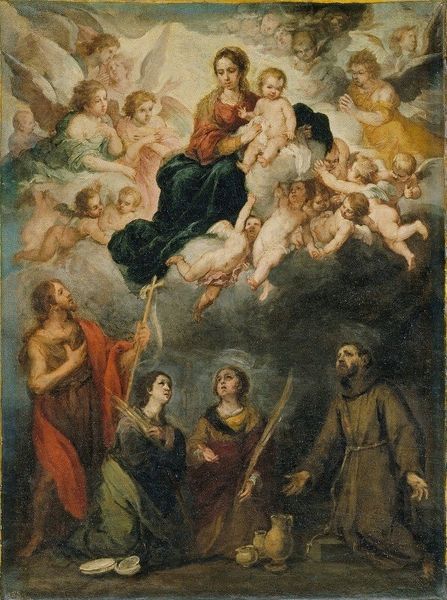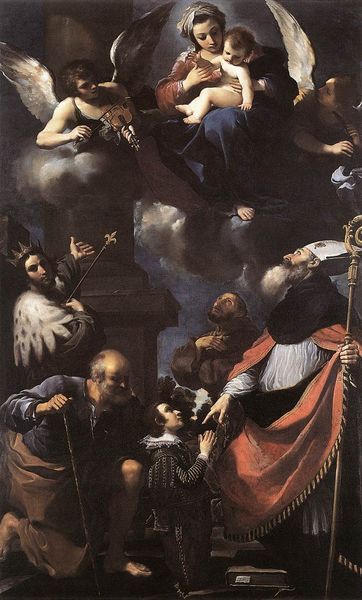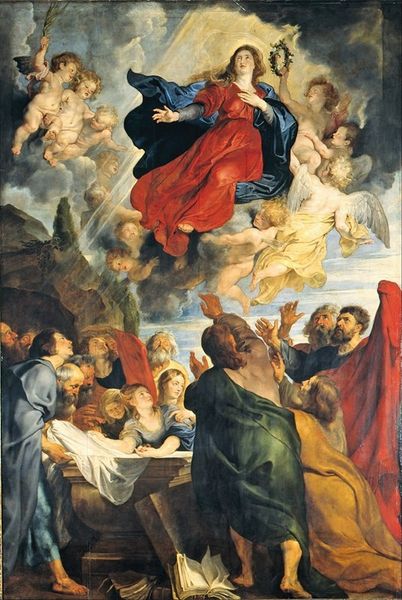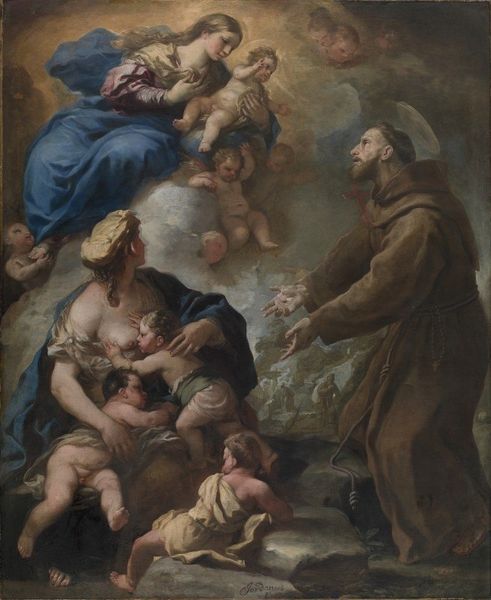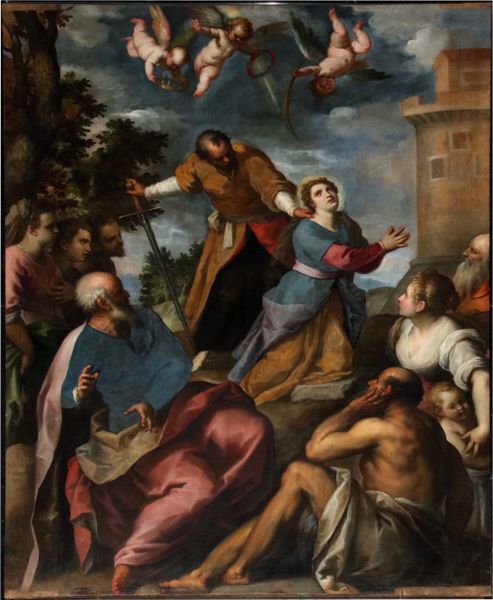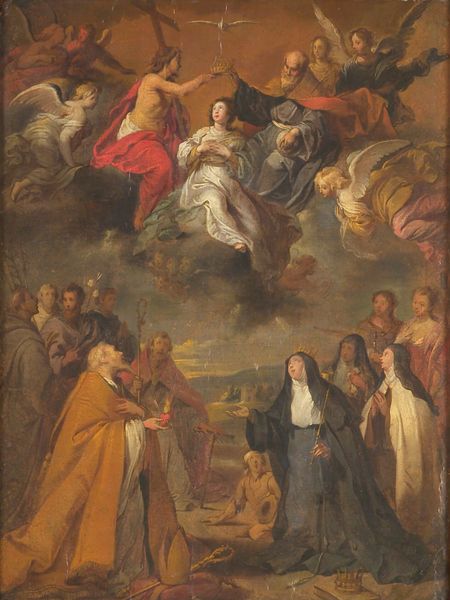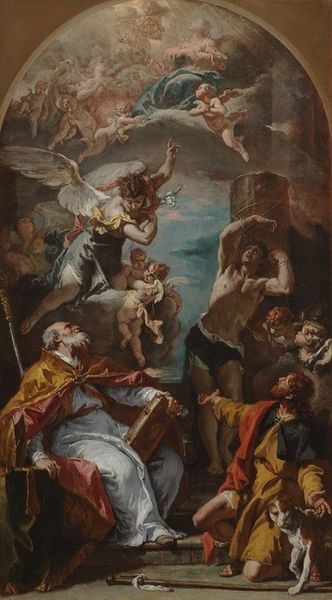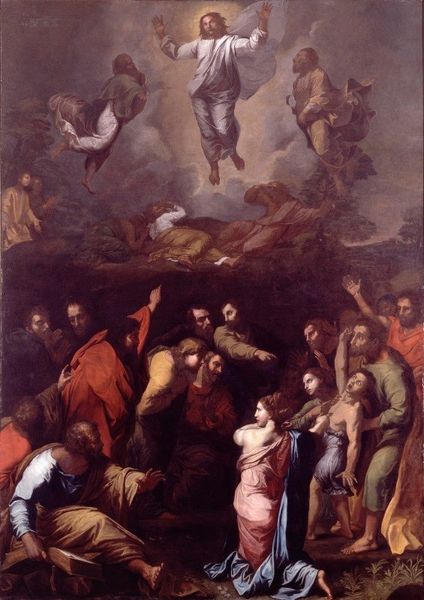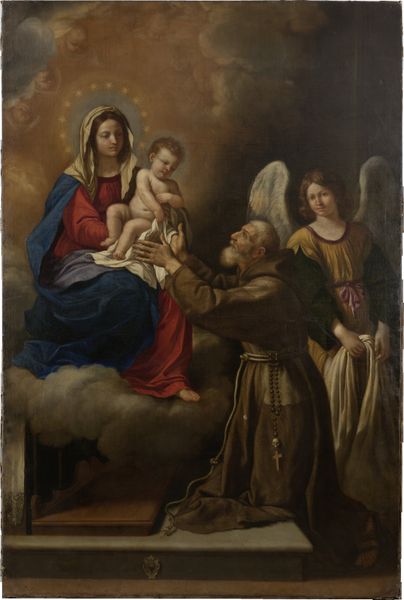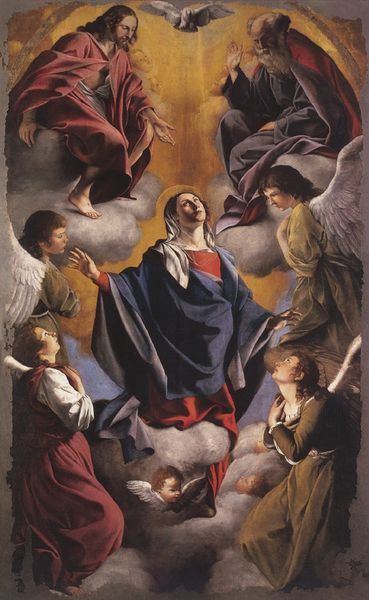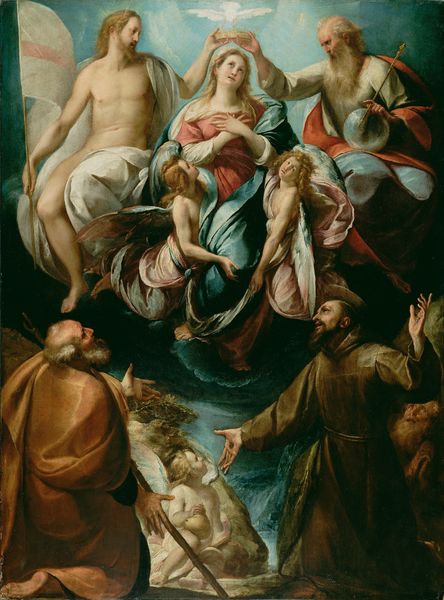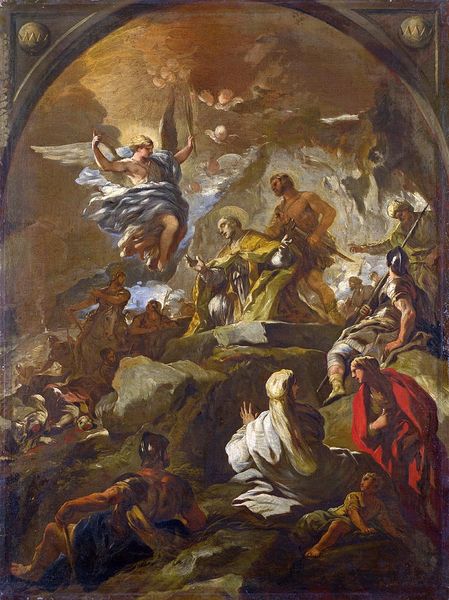
The Holy Ghost, Angels and the Virgin with Saints Mark, Stanislau Kostka (Holding the Child), Aloysius Gonzaga and Francesco Borgia 18th century
0:00
0:00
painting, oil-paint
#
allegory
#
baroque
#
painting
#
oil-paint
#
figuration
#
oil painting
#
history-painting
Dimensions: 145 cm (height) x 97 cm (width) (Netto)
Editor: This oil painting from the 18th century by Nicola Grassi is grand! It's titled "The Holy Ghost, Angels and the Virgin with Saints Mark, Stanislau Kostka, Aloysius Gonzaga and Francesco Borgia," which is a mouthful. It definitely feels like a dramatic, heavenly vision, a little overwhelming with all the figures. What's your take on it? Curator: Well, immediately, I'm interested in how this work functions within the context of 18th-century religious art. Think about the social role this image plays. How does it reinforce specific theological messages, and for whom? The gathering of saints points towards themes of intercession, very relevant within Catholicism, but note who is included - that reveals more specific patronage, and perhaps highlights an emerging or established social class linked to those figures. Editor: That’s interesting; I was focusing on the swirling composition and the light. It makes it feel very Baroque. Curator: Exactly. Baroque art often employed these theatrical displays to inspire religious fervor, and this painting, meant to hang perhaps in a church or a private chapel, certainly attempts that. The political function of imagery in the Baroque era was tied inextricably with institutions like the church and aristocratic families. Who, politically, benefits from representing faith this way? Editor: So it’s not just about faith, it’s also about power? Curator: Precisely. The patronage of such art allowed elites to project their own power through the promotion of specific saints and religious ideas. This imagery has the capacity to build alliances and signal social allegiances. How might the selection and arrangement of saints reinforce existing power structures or attempt to negotiate new ones? Editor: I never thought about religious paintings in terms of power dynamics like that. I guess art really does reflect society. Curator: Absolutely. And the societies create the art too. Examining art's public role provides critical insights into the historical, social and political forces shaping both its creation and reception. Editor: I see this painting in a totally new light now, thanks.
Comments
No comments
Be the first to comment and join the conversation on the ultimate creative platform.
